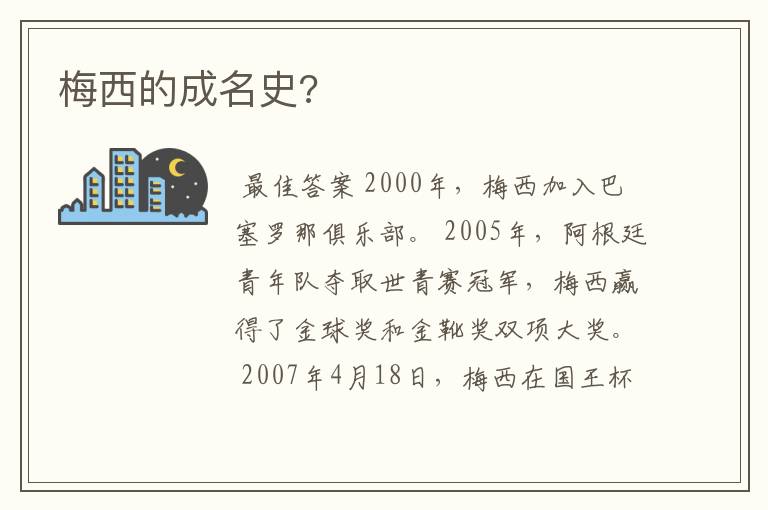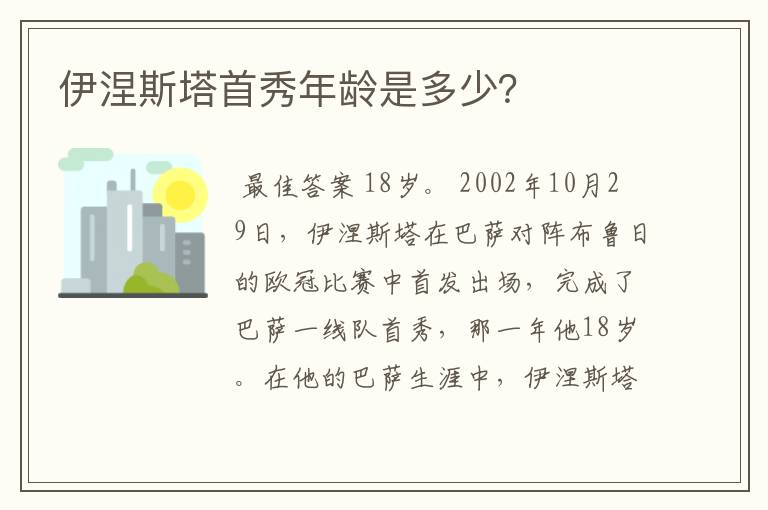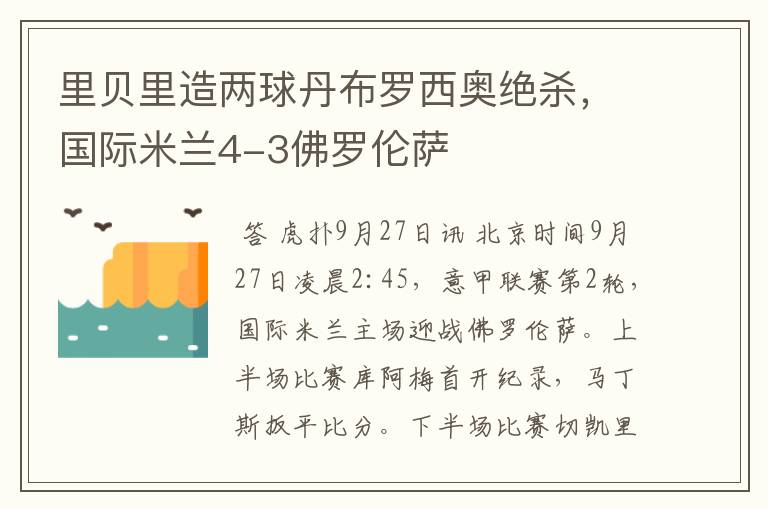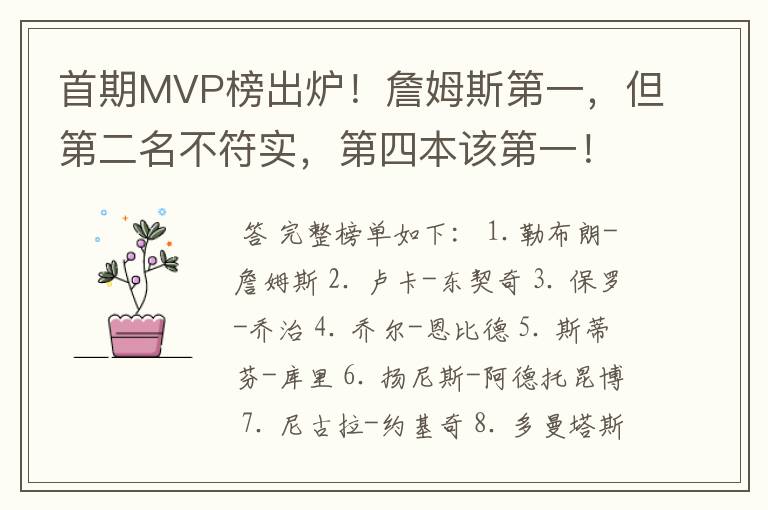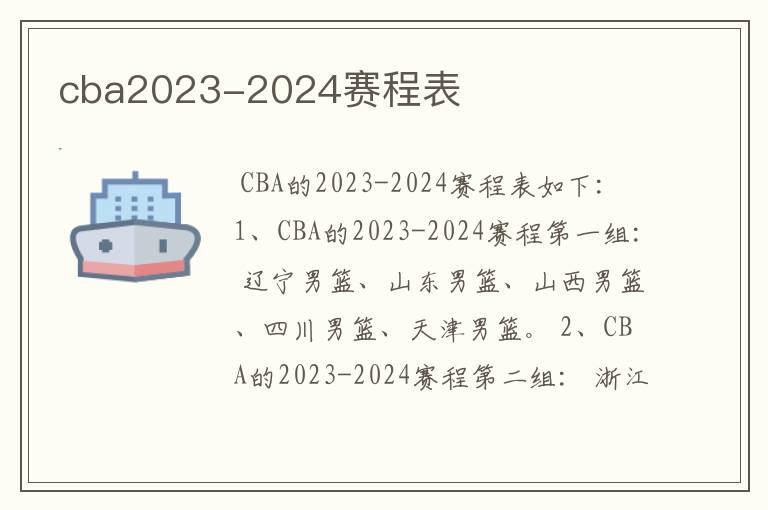中国乒乓球队英文
今天运困体育就给我们广大朋友来聊聊中国乒乓球队,希望能帮助到您找到想要的答案。
乒乓球起源于哪个国家
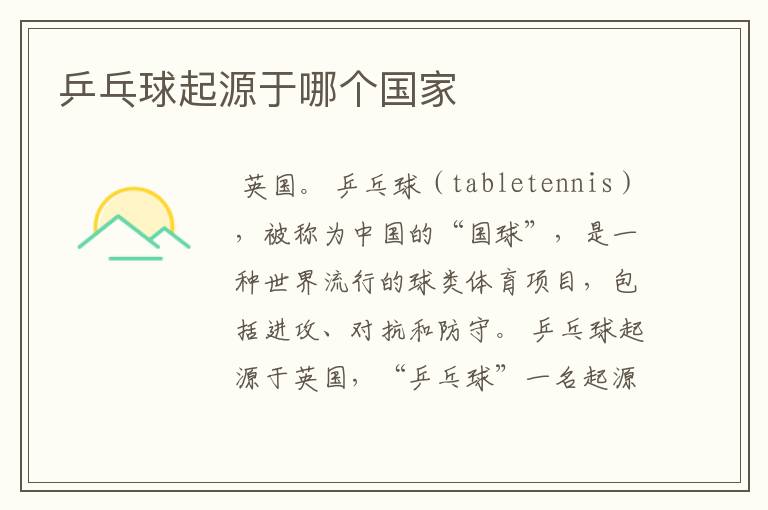
英国。
乒乓球(tabletennis),被称为中国的“国球”,是一种世界流行的球类体育项目,包括进攻、对抗和防守。
乒乓球起源于英国,“乒乓球”一名起源自1900年,因其打击时发出“PingPong”的声音而得名。在中国大陆以“乒乓球”作为它的官方名称,中国香港及澳门等地区亦同。1926年1月,在德国柏林举行了一次国际乒乓球赛,共有9个国家的64名男运动员参加了比赛。同年12月,国际乒乓球联合会正式成立,并把在伦敦举行的欧洲锦标赛命名为第一届世界乒乓球锦标赛。乒乓球组织机构设有国际乒乓球联合会、亚洲乒乓球联盟、中国乒乓球协会。
一、发展历程
1、乒乓球起源
乒乓球起源于英国。19世纪末,欧洲盛行网球运动,但由于受到场地和天气的限制,英国有些大学生便把网球移到室内,以餐桌为球台,书作球网,用羊皮纸做球拍,在餐桌上打来打去。1890年,几位驻守印度的英国海军军官偶然发觉在一张不大的台子上玩网球颇为刺激。后来他们改用实心橡胶代替弹性不大的实心球,随后改为空心的塑料球,并用木板代替了网拍,在桌子上进行这种新颖的“网球赛”,这就是Tabletennis得名的由来。
乒乓球出现不久,便成了一种风靡一时的热门运动。20世纪初,美国开始成套地生产乒乓球比赛用具,它是美国头号持拍运动,有超过20万美国人在打乒乓球。最初,Tabletennis有其它的名称,如Indoortennis,后来,一位美国制造商以乒乓球撞击时所发出的声音创造出Ping-pang这个新词,作为他制造的“乒乓球”专利注册商标,Ping-pang后来成了Tabletennis的另一个正式名称,当它传到中国后,人们又创造出“乒乓球”这个新的词语。
乒乓球单人比赛原来一般采取三局两胜或五局三胜制(每局21分),2001年改为七局四胜制或五局三胜制(每局11分),所谓“局”,英文是Set,发球叫Serve。
在名目繁多的乒乓球比赛中,最负盛名的是世界乒乓球锦标赛,起初每年举行一次,1957年后改为两年举行一次。
2、乒乓球变革
20世纪初,乒乓球运动在欧洲和亚洲蓬勃开展起来。
1926年,国际乒乓球联合会(ITTF)正式成立,并决定举行第一届世界乒乓球锦标赛。乒乓球运动的发展大约经历了三个阶段。初期,运动员使用的球拍虽形状各异,但都是木制的,球弹出后慢、力量小,没有什么旋转技巧,打法也很简单,就是把球在两者之间推来推去。
1936年,第十届世界乒乓球锦标赛在捷克斯洛伐克布拉格举行,大赛中出现了令人惊叹的局面。男子团体冠军争夺赛,在罗马尼亚和奥地利进行,比赛从星期天21时进行。孰料双方派出三名削球手,由于打法相同,双方水平又接近,且都用了蘑菇战术,不肯轻易挑绊,而且企图从对手的失误中取胜。比赛进行到三时还是2:2。当地规定,公共场所必须在3时关闭,惹来了警察干涉,最终耗时31时奥地利才以5:4战胜。
1903年,英国人古德发明了胶皮球拍,有力地促进了乒乓球技术的发展。从1926年到1951年,世界各国选手大都使用表面有圆柱形颗粒的胶皮拍。击球时增加了弹性和摩擦力,可以使球产生一定的旋转,因而出现了削下旋球的防守型打法。这一打法在欧洲流行长久,不少运动员采用这种打法获得了世界冠军。这一时期乒乓球运动的优势在欧洲,其中匈牙利队成绩最突出,在117项次世界冠军中,他们获57项次,占欧洲队的一半。但这种球拍只能以制造下旋为主。人人皆此,磨来守去,即使夺得了冠军也毫无意义。
乒乓球运动的广泛开展,促使球拍和球有了很大改进。最初的球拍是块略经加工的木板。后来有人在球拍上贴一层羊皮。随着现代工业的发展,欧洲人把带有胶粒的橡皮贴在球拍上。20世纪50年代初,奥地利人发明了海绵球拍。最初的球是一种类似网球的橡胶球,1890年,英国运动员吉布从美国带回一些作为玩具的赛璐珞球,用于乒乓球运动。
1959年,容国团获得了第二十五届世界乒乓球锦标赛男子单打冠军后,中国运动员开始登上了国际乒坛。逐渐形成了以“快、准、狠、变”为技术风格的直拍近台快攻打法。在1961年第二十六届世界锦标赛中,中国队既过了欧洲关,又战胜了远台长抽加秘密武器——“弧圈球”打法的日本选手,第一次夺得了男子团体世界冠军。并连续获得第二十七、二十八届男子团体冠军。中国近台快攻的优点是站位近,快,动作灵活,正反手运用自如,比日本远台长抽打法又大大前进了一步。六十年代,中国乒乓球技术水平位于世界最前列,乒乓球运动的优势由日本转移到中国。这是乒乓球运动水平的第二次大提高。
在中国乒乓球运动发展的同时,欧洲运动员从失败中总结经验教训,经过近二十年的努力,终于取日本弧圈球技术和中国近台快攻打法之长,创造出适合于他们的先进打法,即以弧圈球为主结合快攻的打法。代表人物是匈牙利的克兰帕尔和约尼尔。以快攻为主结合弧圈球的打法,是以正反手快攻为主要技术,用反手快拨快攻力争主动,以正手拉弧圈球寻找机会扣杀为得分手段。代表人物是瑞典的本格森、捷克的奥洛夫斯基等。这两种打法的特点是放置较强,快,能拉能打,低拉高打,回旋余地较大。乒乓球运动又推进到放置和紧密结合的新高度。这是乒乓球运动水平的第三次大提高。
20世纪70年代以来,由于国际交往和学习研究的加强,各种打法互取长短,使乒乓球技术得到了更快的发展和提高。比如,中国近台快攻、直拍快攻结合弧圈球、横拍快攻结合弧圈球等打法和技术,均有所发展和创新,在国际比赛中取得了优良的成绩。国际乒乓球联合会已拥有186个会员协会,是世界上较大的体育组织之一。
1982年,国际奥委会通过了关于从1988年起把乒乓球列为奥运会正式比赛项目的决定,推动了乒乓球运动更快地发展。
“小球”变“大球”
20世纪80年代初,中国队囊括第三十六届世界乒乓球锦标赛7项冠军之后,就有人提出把乒乓球加大,把网加高等建议,但这一建议没有得到人们的重视。此后,乒乓球运动技术不断发展,球速越来越快,旋转越来越强,不少运动员对阵时回合减少;有时球飞如闪电,观众还未看清,胜负已经决出,削弱了乒乓球爱好者的兴趣。
1999年在大维第四十五届世乒赛期间举行的国际乒联代表大会上,“大球改革”提案因未获得四分之三多数票而被搁置。
2000年2月23日,国际乒联特别大会和代表大会在吉隆坡通过40毫米大球改革方案,决定从2000年10月1日起,使用直径40毫米、重量2.7克的大球,从而取代38毫米小球。
2017年6月9日,国际乒联官网宣布,乒乓球混双将成为东京奥运会正式比赛项目,而之前国际奥委会主席巴赫就透露,国际奥委会将在洛桑举行执行委员会将召开会议决定是否在2020年东京奥运会乒乓球比赛中增设混双项目,而如今国际乒联官网公布,东京奥运会将设立乒乓球混双项目,这个决定无论对于中国军团还是东道主日本都是一个利好消息,毕竟中日都有实力争夺这枚金牌。
二、发展阶段
乒乓球运动的发展大约经历了六个阶段:
第一阶段
1926年至1951年,欧洲乒乓球运动的鼎盛时期。在这期间,规则的改变和器材的改革,有力地促进了技术的发展。如球台由4.8尺长增至5尺,球网由6.5寸高降为6寸,球从软球改为硬球。对比赛时间也做出规定:一场三局两胜的单打,不得超过1小时,五局三胜的比赛不得超过1小时45分钟,禁止用手指旋转球的那卡尔式发球。
第二阶段
1952年至1959年,日本乒乓球震动世界乒坛。
第三阶段
1959年至1969年,中国乒乓球队崛起,朝鲜乒乓球队崭露头角。
第四阶段
1971年至1979年,欧洲队复兴,中国乒乓球队重整旗鼓。
第五阶段
1981年至1988年,中国乒乓球队攀上世界高峰,演变成“中国乒乓球队对垒世界各国队”的局面。
第六阶段
1991年以后,世界各国乒乓球队对垒中国乒乓球队,成绩卓著,欧洲队领先5~6年。中国乒乓球走出低谷,重攀高峰。
三、奥运会乒乓球比赛硬件场地
(一)场地设施
1、比赛区域
包括可容纳4张或8张球台(视竞赛方法而定)的标准尺寸(8米宽、16米长、天花板高度不得低于4米)的正式比赛场地、比赛区域还应包括比赛球台旁的通道、电子显示器、运动员、教练员座席、竞赛官员区域(技术代表、裁判长、仲裁等)、摄影记者区域、电视摄像区域以及颁奖区域等所需要的面积。
2、灯光
奥运会为了保证电视转播影像清晰,要求照明度为1500~2500克斯。
3、地面
地面应为木制或经国际乒联批准的品牌和种类的可移动塑胶地板。地板具有弹性,没有其它体育项目的标线和标识。地板的颜色不能太浅或反光强烈,可为红色或深红色;不能过量使用油或蜡,以避免打滑。
4、温度
馆内比赛区域的空气流速控制在0.2~0.3米/秒之内,温度为20~25℃左右,或低于室外温度5℃。
(二)器材规格
1、乒乓球台
场地规格赛区应由0.75米高的同一深色的挡板围起,并与相邻的赛区及观众隔开。每张球台的比赛场地面积为8米×16米。场地内放有球台、球网、球、挡板、裁判桌、裁判椅、计分器等。每张球台至少还要使用两台电子计分牌,决赛时使用四台。电子记分牌安放在乒乓球比赛场地两侧后面或四角,牌上有运动员的姓名、所属国家或地区、时间、各局比分等,使观众在看台上可以清楚地看到显示屏上的比分。体育馆内还有一个所有观众都能看清楚的大电子显示屏,能同时显示所有球台比赛的有关信息。决赛或仅使用一张球台比赛时,裁判员使用话筒,以方便全场观众观看比赛。器材规格球台——高76厘米、长2.74米、宽1.525米,颜色为墨绿色或蓝色。球网——高15.25厘米、台外突出部分长15.25厘米,颜色与球台颜色相同。球——呈白色或橙色,且无光泽,直径40毫米、重量2.7克的硬球。挡板——高0.75米、宽1.4或2米,颜色与球台颜色相同。所有器材均由国际乒联特别批准和指定。在整个比赛过程中包括训练设施均必须采用相同牌号的器材。
2、球拍类型
(1)正胶海绵拍
正胶就是胶皮颗粒向上、高度与直径相等的胶皮。它弹性好,击球稳且快,略带下沉的感觉,适合近台快攻型的球员使用。如果觉得自己手腕动作灵活,而大臂和腰腹力量不够,那最好选择以制胜的正胶球拍。
(2)生胶海绵拍
生胶就是颗粒向上、直径大于高度的胶皮。特点是击球有下沉,搓球旋转弱,适合近中台选手使用。
(3)反胶海绵拍
反胶就是粘贴时粗面向下、黏性较大的光面向上的一种胶皮,全欧洲的选手均采用此种胶皮。反胶打球的旋转力特强,所以打法以旋转为主的球员(如弧圈球、削球)必谙此道。当然,反胶容易制造旋转,也容易吃转儿,掌握有一定难度。
(4)长胶海绵拍
一般来说,高度超过1.5毫米的胶皮称为长胶。这种胶皮的胶粒很软,颗粒细长,支撑力小。主动制造旋转的能力很差,主要依靠来球的强旋转或冲力大来增加回球的旋转度。由于长胶的性格特殊,不利于少儿掌握,而且会干扰球感,因此国家已经禁止少儿比赛使用长胶。初学者和技术不高的爱好者同样不适合用长胶!
(5)防守型海绵拍
用拍一般以削球为主,属于旋转型打法,故而横拍削球手多以反胶为主,反手则花样繁多。生产的球拍上,多标明有“进攻”、“全面”、“防守”等类型的分类标识,可供爱好者选择。初学者,不妨选用控球容易的低档球拍来矫正动作,待水平逐渐提高、形成稳定的打法后,再挑选针对性较强的中高档底板。中低档的球拍不一定就不好用,哪块球拍用顺手了,哪块就好用。
(三)灯光要求
奥运会为了保证电视转播影像清晰,要求照明度为1500~2500勒克斯,所有球台的照明度是一样的。如果因电视转播等原因需要增加临时光源,该光源从天花板上方照下来的角度应大于75度。比赛区域其它地方的照明度不得低于比赛台面照明度的1/2,光源距离地面不得少于5米。场地四周一般应为深颜色,观众席上的照明度应明显低于比赛区域的照明度,要避免耀眼光源和未遮蔽的窗户的自然光。
(四)球的规格
乒乓球,分为“有缝”和“无缝”两种工艺。
“小球”变“大球”。
1999年,在大维第四十五届世乒赛期间举行的国际乒联代表大会上,“大球改革”提案因未获得四分之三多数票而被搁置。
2000年2月23日,国际乒联特别大会和代表大会在吉隆坡通过40毫米大球改革方案,决定从2000年10月1日起,使用直径40毫米、重量2.7克的大球,从而取代38毫米小球。乒乓球单人比赛原来一般采取三局两胜或五局三胜制(每局21分)。
从2014年7月1日开始,乒乓球国际比赛将启用全新的、以高分子聚合物为原料的新塑料球,用以替代沿用了123年的乒乓球制造原料——赛璐珞。
2016年6月30日之前,赛璐珞和“新材料”两种乒乓球可以在市场上同时合法销售。2016年7月1日开始,赛璐珞球将全面退出历史舞台。
四、乒乓球发球方式
(一)正手发奔球
1、特点:球速急、落点长、冲力大,发至对方右大角或中左位置,对对方威胁较大。
2、要点:①抛球不宜太高;②提高击球瞬间的挥拍;③第一落点要靠近本方台面的端线;④点与网同高或稍低于网。
(二)反手发急球与发急下旋球
1、特点:球速快、弧线低,前冲大,迫使对方后退接球,有利于抢攻,常与发急下旋球配合使用。
2、要点:①击球点应在身体的左前侧与网同高或比网稍低;②注意手腕抖动发力;③第一落点在本方台区的端线附近。
(三)发短球
1、特点:击球动作小,出手快,球落到对方台面后的第二跳下不出台,使对方不易发力抢拉、冲或抢攻。
2、要点:①抛球不宜太高;②击球时,手腕的力量大于前臂的力量;③发球的第一落点在球台,不要离网太近;④发球动作尽量与发长球相似,使对方不易判断。
(四)正手发转与不转球
1、特点:球速较慢,前冲力小,主要用相似发球动作,制造旋转变化去迷惑对方,造成对方接发球失误或为自己抢攻创造机会。
2、要点:①抛球不宜太高;②发转球时,拍面稍后抑,切球中下部;越是加转球,越应注意手臂的前送动作;③发不转球时,击球瞬间减小拍面后仰角度,增加前推的力量。
(五)正手发左侧上(下)旋球
1、特点:左侧上(下)旋转力较强,对方挡球时向其右侧上(下)方反弹,一般站在中线偏左或侧身发球。
2、要点:①发球时要收腹,击球点不可远离身体;②尽量加大由右向左挥动的幅度和弧线,以增强侧旋强度。③发左侧上旋时,击球瞬间手腕快速内收,球拍从球的正中向左上方摩擦。④发左侧下旋时,拍面稍后仰,球拍从球的中下部向左下方摩擦。
(六)反手发右侧上(下)旋球
1、特点:右侧上(下)旋球力强,对方挡住后,向其左侧上(下)反弹。发球落点以左方斜线长球配合中右近网短球为佳。
2、要点:①注意收腹和转腰动作;②充分利用手腕转动配合前臂发力;③发右侧上旋球时,击球瞬间球拍从球的中部向右上方摩擦,手腕有一个上勾动作;④发右侧下旋球时,拍面稍后仰,击球瞬间球拍从球的中下部向右侧下摩擦。
(七)下蹲发球
1、特点:下蹲发球属于上手类发球,中国运动员早在50年代就开始使用。横拍选手发下蹲球比直拍选手方便些,直拍选手发球时需变化握拍方法,即将食指移放到球拍的背面。下蹲发球可以发出左侧旋和右侧旋,在对方不适应的情况下,威胁很大,关键时候发出高质量的球,往往能直接得分。
2、要点:①注意抛球和挥拍击球动作的配合,掌握好击球时间。②发球要有质量,发球动作要利落,以防在还未完全站起时已被对方抢攻。③发下蹲右侧上、下旋球时,左脚稍前,身体略向右偏转,挥拍路线为从左后方向右前方。拍触球中部向右侧上摩擦为右侧上旋;从球中下部向右侧下摩擦为右侧下旋。④发下蹲左侧上、下旋球时,站右中部向左上方位稍平,身体基本正对球台,挥拍路线为从右后方向左前方。拍触球摩擦为左侧上旋;从球中部向左下部摩擦为左侧下旋。⑤发左(右)侧上、下旋球时,要特别注意快速做半圆形摩擦球的动作。
(八)正手高抛发球
1、特点:最显著的特点是抛球高,增大了球下降时对拍的正压力,发球快,冲力大,旋转变化多,着台后拐弯飞行。但高抛发球动作复杂,有一定的难度。
2、要点:①抛球勿离台及身体太远。②击球点与网同高或比网稍低,在近腰的中右处(15厘米)为好。③尽量加大向内摆动的幅度和弧线。④发左侧上、下旋球与低抛发球同。⑤触球后,附加一个向右前方的回收动作,可增加对方的判断(结合发右侧旋球,更有威力)。
他是一名了不起的中国乒乓球队英文员
他是一名了不起的中国乒乓球队队员
He is a great Chinese table tennis team player.
他是一名了不起的中国乒乓球队队员
He is a great Chinese table tennis team player.
请教一下下列有关乒乓球的术语英文翻译,越详细越好!
angle (closed angle; open angle) | 角度(合角/朝下,仰角/朝上) | n.
anti- (anti-topspin; anti-loop) | 防 (上旋,弧旋,旋转) | pref.
antispin | 防转胶皮 | n. an inverted rubber sheet that’s very slick, so spin doesn’t take on it. It usually has a dead sponge underneath. It’s mostly used for defensive shots. Also known as anti.
arc | 弧线 | n.
arm | 手臂 | n. upper arm | 大/上臂 |
assessment | 评估 | n.
attack | 进攻 | v. a devastating ~ ()
attack after serve | 发抢(发球抢攻的缩略)|
attack on serve | 接发抢 (接发球抢攻的缩略)|
attacker | 攻击型选手, 进攻方 | n.
AUT | 奥地利 | Austria
B English-Chinese Table Tennis Dictionary
back | 背 | n.
back | 后面的 | a.
backhand | 反手 | n. A shot done with the racket to the left of the left elbow for a right-hander, the reverse for a left-hander.
Backhand backside drive / loop
backing | 抵, 顶 | n.
backspin | 下旋, 下转 | n. A type of spin used mostly on defensive shots. When you chop the ball, you produce backspin. The bottom of the ball will move away from you. This is also called chop or underspin.
backward | 向后 | adv.
ball | 球 | n.
band | 带子,套子 | n. head ~ 额带,wrist ~ 护腕
barrier | 球挡 | n.
bat | 球拍 | n.
bat | 球拍 | n.
bent | 弯曲 | v.
Bergmann, Richard || (AUT) 1937, (ENG) 1939, 1948 and 1950 World Champion (Men’s single)
block | 挡球, 推挡 | v. n. A quick, off the bounce return of an aggressive drive done by holding the racket in the ball’s path.
break | 打破,破坏 | v. to break the looper’s rhythm ||
brush | 摩擦 | v. n.
bucket | 球筐 | n. a ~ of balls for multi-ball practice
center line | 中线 | np.
change line | 变线 |
cheerleader | 啦啦队长 | n.
chest | 胸 | n.
chop | 削球 | v. n. A defensive return of a drive with backspin, usually done from well away from the table. (see backspin)
chop block | 下旋推挡 | np. A block where the racket is chopped down at contact to create backspin.
chopper | 削球选手 | n. A of play where chopping is the primary shot.
closed | (球拍)前倾, (球拍)下压 | a.
closed racket | 前倾的/下压的球拍,压拍型 | np. Racket position in which the hitting surface is aimed downward, with the top edge leaning away from you. comeback | 追上, 扳回 | n.
contact | 接触 | v. n.
control | 控制 | v. n. receive control (接发球控制)
corner | 角落 | n.
counter-attack | 反攻 | n.
counterdrive | 反攻, 对攻 | v. n A drive made against a drive. Some players specialize in counterdriving.
counter-loop | 反拉弧旋,反拉 | v. n. To loop a loop. (see loop)
countersmash | 反攻, 对攻 | v. n. To smash a smash. (see smash)
crosscourt | 球台对角的 | a. A ball that is hit diagonally from corner to corner. ||
crossover | 交叉步 | n. A of footwork for covering the wide forehand.
cut | 削球 | v. n.
diagonal | 斜线的 | a.
diagonally | 斜线地 | adv.
die out | (旋转)消失 | vp.
direction | 方向 | n.
disguise | 装作,假装 | v.n.
disputed edge ball, a | 有争议的擦边球 | np.
double | 连击 | n.
double bounce | 两跳 | np. A ball that hits the same side of the table twice. The person on that side loses the point.
doubles | 双打 | n.
down | 下, 落后 | adv. prep. a.
down the line | 直线 | np. A ball that is hit along one side of the table.
draw | 抽签 | n.
drive | 攻球 | v. n.
drop shot | 吊球,近网短球 | np. Putting the ball so short that the opponent has trouble reaching it. Done when the opponent is away from the table.
dump shot | 勉强的球 | np. All hitters must accept the fact that sometimes you must go for a dump shot to make sure that you don’t miss an opportunity to smash. (Larry, 1993: 119)
E English-Chinese Table Tennis Dictionary
even up | 打平 | vp.
exert the authority | 执法, 行使职权 | vp.
expedite system / rule | 超时轮换发球制 / 规则 | np. If a game has continued for 15 minutes without the game ending, the expedite rule takes effect. A point is awarded to the receiver who returns 13 consecutive shots after expedite has been called. Players alternate serves after expedite has been called.
explosive | 爆发的 | a. ~ power ||
F English-Chinese Table Tennis Dictionary
Farkas, Gizella || (HUN) 1947, 1948 abd 1949 World Champion (Women’s single)
fast | 快 | a. flat | 平球,不转的球 | n. A ball that has no spin, usually traveling fast. The ball hits the racket straight on, at a perpendicular angle, e.g. a flat shot ||
flexibility | 灵活(性)| n,
flight | (球的)飞行 | n.
flip | (台内)挑攻,旋转球拍 | v. n. An aggressive topspin return of a ball that lands near the net (a short ball). To move in twists and turns
float | 漂,浮 | a. backspin is usually float
follow-through | 手臂击球后的惯性动作 | n. It is the natural progression of the racket forward and up after a stroke
follow-up | 跟进球 | n.
foot | 脚 | n.
footwork (forward, backward, side-to-side) | 步法 | n. How a person moves to make a shot.
forearm | 前臂 | n.
forehand | 正手 | n. Any shot done with the racket to the right of the elbow for a right-hander, to the left for a left-hander.
grip | 执拍法 | n. pen grip ||, pendulum serve grip || (Larry, 1993: 109)
grippy | 粘球的 | a. grippy inverted rubber
groove | 适应,顺手 | n. fig. If a hitter gets into a groove, the game’s over.
H English-Chinese Table Tennis Dictionary
handle | 球拍的柄 | n. straight (ST) | 直柄 | flare (FL) | 收腰柄 | anatomic (AN) | 葫芦柄 | conical | 锥形柄 |
hanger | ? | n.
hard rubber | 光胶皮球拍 | np. A type of racket covering with pips-out rubber but no sponge underneath. It was the most common covering for many years until the development of sponge rubber but is now rarely used.
Hidden serve | 遮掩式发球 | n
high | 高的 | a.
high kicking loop | 高吊弧旋 | np.
high toss serve | 高抛发球 | n. A serve where the ball is thrown high into the air. This increases both spin and deception.
hit | 击球 | v.
hitter | 击球方,攻击型选手 | n. A of play where hitting is the primary shot.
HUN | 匈牙利 | Hungary inverted racket | 反胶球拍 | np.
inverted sponge | 反胶 | np. The most common racket covering. It consists of a sheet of pimpled rubber on top of a layer of sponge. The pips point inward, toward the sponge, so the surface is smooth. This is the opposite of pips-out sponge, where the pips point outward, away from the sponge.
junk player | 怪球手 | np. A player who uses an unusual racket covering, usually long pips or antispin.
keep | 保持 | v.
Kettnerova, Marie || (TCH) 1933 and 1935 World Champion (Women’s single)
kill off | 扣失 | But Kim Taek Soo kills Liu Guozheng’s serve off. | 但是金泽洙扣杀刘国正的发球失误 |
kill shot | 扣杀球 | np. (see smash)
knee | 膝 | n.
knife grip (See western grip) | 横拍握法 | np.
knock acock | 打败 | vp.
L English-Chinese Table Tennis Dictionary
late (stage) | 下降期 | a. n.
Leach, Johnny || (ENG) 1949 and 1951 World Champion (Men’s single)
Lead | 领先 | v. a. In the second game, Persson again has a big ~, this time 17-8 and ties it up at 17 all! Nine in a row! But Persson pulls it out, 22-20.
lefthander | 左手运动员 | n.
lefty | 左手选手| n.
leg | 腿 | n.
let | 重发,无效,不算,重新来过 | n. If play is interrupted for any reason during a rally, a let is called and the point does not count.
let serve | 擦网重发 | np. The most common type of let when a serve nicks the net. As with other lets, the serve is taken over again.
light | 轻的,轻微的 | a. light spin
line (side line, endline) | 台边 (边线,底线)| n.
lineman | 底线司线员 | n.
little (spin) | 轻微的(旋转)| a.
Liu Guoliang || gold titleholder of the Olympics, the World Championships, the World Cup
loaded | 加转的 | a. A ball with a great deal of spin.
lob | (放/打) 高球 | v. n. A high defensive return of a smash. Usually done with topspin or sidespin.
lobber | 放高球的选手 | n.
long | 长的 | a. See deep.
long pips | 长胶 | np. A type of pips-out rubber where the pips are long and thin and bend on contact with the ball. It returns the ball with whatever spin was on it at contact and is very difficult to play against if you aren’t used to it.
loop (fast loop; slow loop) | (拉)弧旋球(前冲弧旋,高吊弧旋)| v.n. A heavy topspin shot, usually considered the most important shot in the game. Many players either specialize in looping or in handling the loop. The back-of-racket penhold backhand loop (直板反手反面拉,即为直板横拉)
looper | 弧旋球选手 | n. A of play where the primary shot is the loop.
loose | 松的 | a.
lose | 失利, 输 | v.
low | 低的 | a.
low fast loop | 前冲弧旋 | np.
M English-Chinese Table Tennis Dictionary
match | 比赛 | n. A two or three or three out of five games contest.
middle game | 过渡球 |
miss | 漏掉,错过 | v.
mixed doubles | 混合双打 | np.
more (spin) | 加转 | a.
Morisawa, Sachiko || (JPN) 1967 World Champion (Women’s single)
move | 移动,使…移动 | v. n. Move your opponent in and out. ||
multi-ball | 多球 | n.
N English-Chinese Table Tennis Dictionary
neck | 颈 | n.
NED | 荷兰 | Netherlands
net | 球网 | n. the ~ assembly | 网具 | np.
net measurer | 量网器 | np.
nick | 擦,触 | v.
NOR | 挪威 | Norway
no-spin | 不转 | a.
O English-Chinese Table Tennis Dictionary
one-sided | 单面的 | a. A one-sided looper rushes all over the court trying to use a forehand. ||
open | 向上的 | a.
open racket | 拍面向上的球拍,亮拍型 | np. Racket position in which the hitting surface is aimed upward, with the top edge learning toward you. [参看closed racket |压拍型|]
opening | 空档 | n.
opponent | 对手 | n.
P English-Chinese Table Tennis Dictionary
penhold backside hit | 直板横打 | penhold backside drive / loop / smash etc.
Pen-hold grip | 直握法 | np.
penholder | 直拍选手 | n. A type of grip used mostly by Asians. It gives the best possible forehand but the most awkward backhand of the conventional grips.
Perry, Fred || (ENG) 1929 World Champion (Men’s single)
pick hitting | 防守中的突击 |
pick-hitting | 挑攻,台内攻球 ?| n.
picky | 挑剔的,讲究的 | a.
pips | 胶粒 | n. The small conical bits of rubber that cover a sheet of table tennis rubber.
pips-out | 正胶 胶粒向外 | a. A type of racket covering. It consists of a sheet of pips-out rubber on top of a layer of sponge. The pips point outward, the opposite of inverted.
placement | 落点 | n. the placement of loops / smash / forehand drive
play | 打,比赛 | n.v. in ~ | 正在比赛中 | play sloppily | 打得稀松 |
playing surface, the | 球台台面 | np. The top of the table, including the upper edges.
point | 得分 | n.
POL | 波兰 | Poland
pop up | (球)高了 | vp. to pop a drop shot up | 短球放高了 |
position | 位置 | n. a ready ~ | 准备位置,预备位置 |
power | 力量 | n. Players are often using the whole of the arm plus the body and a twist of the hips to get power. ||
Pritzi, Gertrude || (AUT) 1937 (co-) and 1938 World Champion (Women’s single)
PRK | 朝鲜 | the Peoples Republic of Korea
pull ahead | 领先 | v.
pull away | 把比分拉开 | v.
push | 搓球 | v. n. A backspin return. Usually defensive. A sidespin ~ | 侧(旋)搓,侧挤 |
pusher | 搓球方,搓球者 | n.
put away | 扣杀 | vp. See smash.
put-away shot | 扣杀球 | np. See smash.
Punch-block | 加力推档 |
racket | 球拍 | n. What you hit the ball with. The blade plus covering. A combination racket | 两面性能不同的球拍 |
racket hand | 执拍手 | np. The hand that holds the racket.
racket holder | 球拍袋/包 | np.
rally | 来回球, 相持球 | n. The hitting of the ball back and forth, commencing with the serve and ending when a point is won. It is the period of during which the ball is in play (See play).
rating events | 排名赛 | np. A tournament event that requires players to be rated under a specified amount.
reaction time | 反应时间 | np.
read | 识别 (旋转)| v. the spin
ready position/home position | 预备位置 | np.
receive | 接发球 | v. n. The return of a serve.
receiver | 接发球方,接发球的选手 | n.
reckless | 粗心的 | a.
recover | 还原 | v.
relax | 放松 | v.
return | 回球 | v.
rhythm | 节奏 | n. to break the looper’s rhythm ||
right-handed | 右手执拍的 | a.
righty | 右手选手 | n
rip | 积极进攻,(侧身)抢攻 | a loop winner | 抢拉赢得一分 |
rotate | 转圈 | v.
Rozeanu, Angelica || (ROM) 1950, 1951, 1952, 1953, 1954 and 1955 World Champion (Women’s single)
rubber (backside) | 胶皮 | n. The racket covering. Sometimes refers only to the rubber on top of a sponge base. || pips out ~ | 正胶胶皮 | inverted ~ | 反胶胶皮 | long pips ~ | 长胶胶皮 | semi long pips ~ | 半长胶胶皮 | anti-spin/loop ~ | 防弧胶胶皮 |
rubber clearner | 胶皮清洁擦 | np. Used to keep the surface of inverted rubber clean.
runner-up | 亚军 | n.
sandwich rubber | 套胶 | np. A sponge base covered by a sheet of rubber with pips that point either in or out. If pointed in, it is inverted sponge. If pointed out, it is pips-out sponge.
Satoh, Hiroji || (JPN) 1952 World Champion (Men’s single)
score | 计分,得分 | n.
scorer | 计分器 | n.
scoring system | 记分制 | 11-point ~ | 11分制 | 21-point ~ | 21 分制 |
serve (non-spin; backspin / underspin; side-spin; topspin one; toss; squad; two bounce serve) | 发球 | v. n. The first shot, done by the server. It begins with the ball being tossed from the palm of the hand and struck by the racket. || In the first, Bratanov was leading 19-16, but Placemtini won all five on his ~ to win 21-19. ||
serve off | 发球 | v.
server | 发球方 | n.
service | 发球 | n. ~ change ||
set | 局 | n.
set point | 局点| np.
severe | 强烈的 | a. ~ spin ||
shadow | 徒手的 | a. a shadow-stroke | 徒手击球 | a ~ practice | 徒手训练 | You can ~ the various shots and techniques without a ball. ||
shakehands grip | 横握法 | np. The most popular grip. It gives the best balance of forehand and backhand.
shift | 移动 (重心)| v.
short | 短的,短球 | a. n. A ball that would bounce twice on the opponent’s side of the table if given the chance.
shot | 好球,击球 | n. a high-risk shot ||
shoulder | 肩 | n.
sidespin | 侧旋 | n. A type of spin most effective on serves. When you use sidespin, that ball spins like a record on a record player.
sidespin loop | 侧旋弧旋 | np.
Sido, Ferenc | 西多 | (HUN) 1953 World Champion (Men’s single)
single | 单打的 | a.
singles | 单打 | n.
Sipos, Anna | ? | (HUN) 1932 and 1933 World Champion (Women’s single)
slow | 慢节奏 | a. ~ pace
smash | 扣杀 | v. n. a smash is a very powerful forehand or backhand attack, also called kill shot or a put-away shot. / Ball is hit with enough speed so opponent cannot make a return. Also called a kill shot or a put-away shot.
smother kill | 近网吊球 | n. a short return, usually used against a lob. / to smash right off the bounce. Usually done against lob.
snap | 挑?| v. a wrist ~ | 翻腕挑(尤指反手的台内挑打)|
souvenir | 礼品 | n.
spare | 备用的 | a.
specialize in | 擅长(训练的结果)| vp.
spectator | 观众 | n.
speed | | n.
speed glue | 速干胶 | n. A type of glue that can be put under a sheet of table tennis sponge to make it faster and spinier.
spin (topspin; backspin / underspin; sidespin; non-spin; spin combination, crazy spin) | 旋转 | v. n. The rotation of the ball.
sponge | 海绵 | n. The bouncy rubber material used in sandwich covering under a sheet of rubber with pips. It revolutionized the game and ended the hard rubber age in the 1950s.
stable | 稳定的 | a.
stage (early, peak, late, very late) | 击球时期 (上升期, 高点, 下降期, 下降末期) | n.
stamina | 抗击/对抗能力 | n.
stance | 站位 | n. ready stance | 预备站位 |
stand | 观众席, 比赛观看台 | n.
standing | 名次 | n.
step | 移动步伐 | v. Watch to see if they step around the backhand corner too much. If so, return the fast serve wide to the forehand with a quick drive or block. (Larry, 1993: 119)
step around | 侧身 | v.
strategy | 策略 |
strength | 力量,优势 | n. Everyone has his or her strengths and weaknesses. || But the second wasn’t exactly close at first ---- Boll led 17-7, 19-2, and 20-16, mostly on the ~ of his attack.
stretch | 伸展 | v. n.
stroke (preparation; contact; follow-through) | 击球 | n. v. Any shot used in the game, including the serve.
swat | 劈杀 | v.
swing | 摆动 | v.
Szabados, Miklos || (HUN) 1931 World Champion (Men’s single)
T English-Chinese Table Tennis Dictionary
table | 球台 | n.
tactics | 战术,策略 | n.
Tanaka, Toshiaki || (JPN) 1955 and 1957 World
team | 球队 | n. the national ~ | 国家队 |
tentative | 暂时的 | a.
The World Table Tennis Championships (The World Championships) | 世界乒乓球锦标赛 (世锦赛)
threat | 威胁 | v. n.
thumb | 大拇指 | n.
tie | 比赛, 对局, 对阵 | n.
tight | 紧的, 紧张的 | a.
timeout | 暂停 | n.
topspin | 上旋球 | n. A type of spin used on most aggressive shots. When you topspin the ball, the top of the ball moves away from you.
toss | 抛起 | v.
tournament | 锦标赛 | n.
trade off | 各胜(多少) | v.
training | 训练 | n.
trampoline | 弹,崩 | v. Hold the racket with a relaxed grip and let the ball sink into the sponge and trampoline back, usually with a light topspin. (Larry, 1993: 63)
transfer | 转移 | v. He transfers some of the weight on his left leg to his right leg. ||
transition | 转换 | n. a smooth, flowing ~ from one shot to the next ||
truck | 躯干 | n.
Twirl | 球拍旋转法 | n. Turning the racket, usually in the middle of a serve or while the ball is in play, to confuse the opponent as to which type of rubber is being used at a specific time. Not as deceptive as it once was, because of the ‘two color rubber’ law. (San Diego Table Tennis Association Website )
twist | 扭转 | v.
Two color rubber law | 两面胶皮两种颜色条例 | np. A table tennis law put into effect, namely using red rubber on one side of the racket and black rubber on the other side, so opponents will not be so confused and deceived. (San Diego Table Tennis Association Website )
two-step footwork | 跨步 | np. The most popular of footwork where the player starts with a short step with the foot on the side he or she is moving to. Then, the other foot follows as both feet move together.
U English-Chinese Table Tennis Dictionary
umpire | 裁判 | n. The official who keeps score and enforces rules during a match.
underspin (See backspin) | 下旋 | n. See backspin.
up | 上 |
upward | 向上 | adv.
versatility | 技术多样,战术多变 | n. The key to beating a hitter is versatility. (Larry, 1993” 119)
very late (stage) | (球的) 下降后期 | ap.
vicious | 凌厉的 | a. a ~ loop ||
W English-Chinese Table Tennis Dictionary
warm up | 准备活动,热身 | v. n.
watt | 亚光(的),不反光的 | n.a.
weakness | 弱点,劣势 | n.
weight | 重心,重量 | n.
western grip | 横握 (球拍) | np.
whiff | ?| v.
whiplash | 鞭击似的击球 | n. to give the ball ~ ||
whip-through | 鞭击似的抽球 | n. The whip-through after contact is really quick.
wide forehand | 正手空档 | np. Go to the wide forehand, then come back to the backhand.
wild card | 外卡 | n
win | 胜利, 嬴 | v.
wing (one-winged; two-winged) | 面 (单面;两面) | n.
winner | 胜方,得分 | n.
wrist | 手腕 | n. a ~ snap
奥运会中乒乓球一共有几块金牌?
奥运会中乒乓球一共有四块金牌,分别是男单、女单、男团、女团。
乒乓球(table tennis),被称为中国的“国球”,是一种世界流行的球类体育项目,包括进攻、对抗和防守。
组织机构
1、国际乒乓球联合会(英文为:International Table Tennis Federation,缩写为:ITTF)。
2、亚洲乒乓球联盟(英文为:Asian Table Tennis Union,缩写为:ATTU)。
3、中国乒乓球协会(英文为:CHINESE TABLE TENNIS ASSOCIATION,缩写为:CTTA)。
中国乒乓球历史
中国乒乓球队中国乒乓球队成立于1952年,拼搏不息,攀登不止,经历了由弱到强、持久昌盛的发展历程。中国乒乓球队包括中国女子乒乓球队和中国男子乒乓球队,是中国体育军团的王牌之师,屡次在国际大赛上争金夺银,被体育迷们习惯地称为梦之队。继在2008年北京奥运会上包揽男单、女单、男团、女团四枚金牌之后,在2012年伦敦奥运会上再次包揽男单、女单、男团、女团四枚金牌,成为当之无愧的梦之队。中文队名 中国乒乓球队外文队名 Table tennis team of the People's Republic of China运动项目 乒乓球角逐赛事 2012年奥运会乒乓球决赛所属地区 中国成立时间 1952年主场馆 国家乒羽馆现任主教练 刘国梁(男队)、孔令辉(女队)知名人物 邓亚萍、张怡宁、王楠;孔令辉、刘国梁、王皓、马琳、张继科等主要荣誉 2008年奥运会包揽乒乓球四枚金牌
2012年奥运会包揽乒乓球四枚金牌现任队员 丁宁,李晓霞,郭跃,刘诗雯现任队员 马龙,张继科,王皓,许昕总教练 刘国梁1988年第24届汉城奥运会女子单打冠军陈静亚军李惠芳季军焦志敏男子双打冠军陈龙灿/韦晴光女子双打亚军 焦志敏/陈静1992年第25届巴塞罗那奥运会男子单打季军马文革女子单打冠军邓亚萍亚军乔红男子双打冠军吕林/王涛女子双打冠军 邓亚萍/乔红 亚军陈子荷/高军1996年第26届亚特兰大奥运会男子单打冠军 刘国梁 亚军 王涛女子单打冠军 邓亚萍 亚军陈静 季军 乔红男子双打冠军 孔令辉/刘国梁 亚军 吕林/王涛女子双打冠军 邓亚萍/乔红 亚军刘伟/乔云萍2000年第27届悉尼奥运会男子单打冠军 孔令辉 季军 刘国梁女子单打冠军王楠亚军李菊季军 陈静(中华台北)男子双打冠军 王励勤/闫森亚军 刘国梁/孔令辉女子双打冠军 王楠/李菊 亚军杨影/孙晋2004年第28届雅典奥运会男子单打亚军 王皓 季军 王励勤女子单打冠军张怡宁男子双打冠军 马琳/陈杞女子双打冠军 王楠/张怡宁 季军牛剑锋/郭跃2008年第29届北京奥运会男子单打冠军 马琳 亚军 王皓 季军 王励勤女子单打冠军 张怡宁 亚军 王楠 季军 郭跃男子团体冠军 马琳、王皓、王励勤女子团体冠军 张怡宁、王楠、郭跃2012年第30届伦敦奥运会男子单打冠军 张继科 亚军 王皓女子单打冠军 李晓霞 亚军 丁宁女子团体冠军 李晓霞、丁宁、郭跃男子团体冠军 张继科、王皓、马龙 ~如果你认可我的回答,请及时点击【为满意回答】按钮
~~手机提问的朋友在客户端右上角评价点【满意】即可。
~你的是我前进的动力
~~O(∩_∩)O,记得好评和,互相帮助
今天的内容先分享到这里了,读完本文《中国乒乓球队英文》之后,是否是您想找的答案呢?想要了解更多,敬请关注www.zuqiumeng.cn,您的关注是给小编最大的鼓励。
本文来自网络,不代表本站立场,转载请注明出处:https://www.zuqiumeng.cn/wenda/1637072.html
